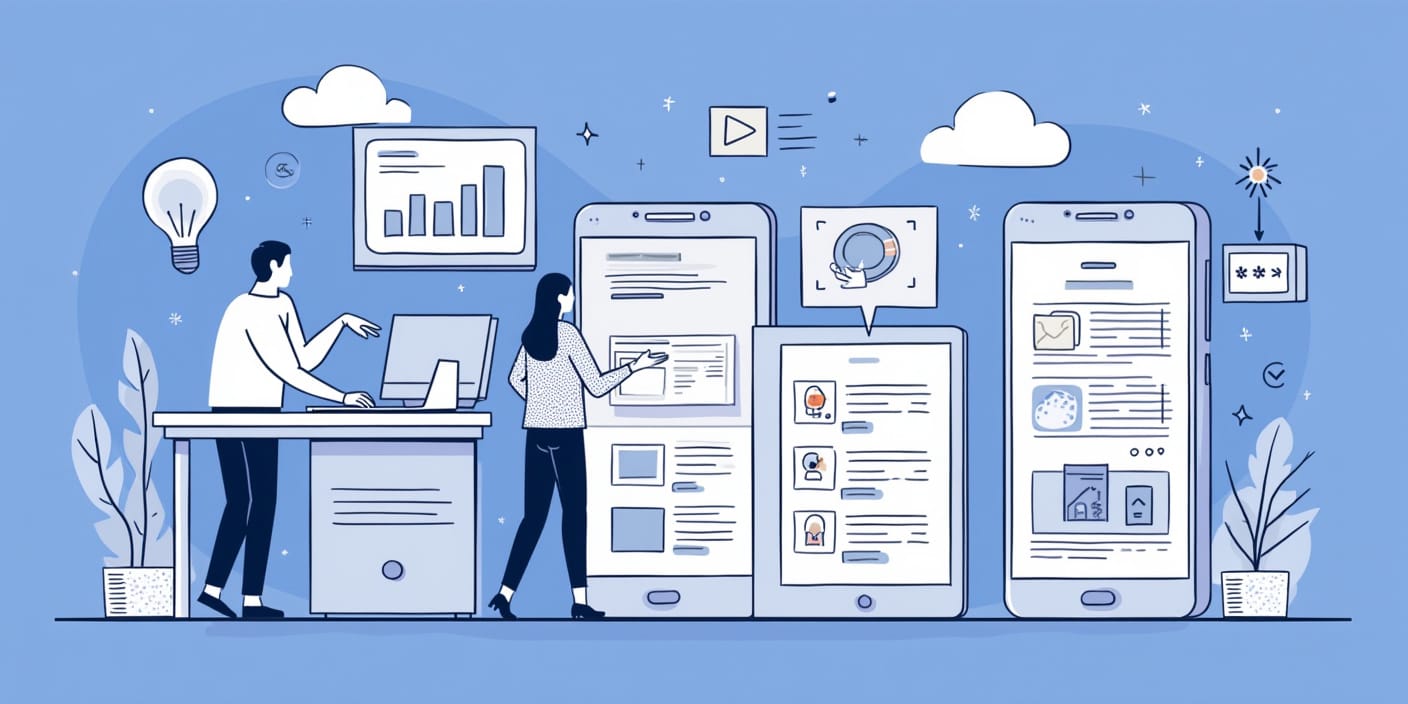Top 5 Must-Have UX Features for a Killer App
Learn the 5 essential UX feature for seamless onboarding, personalization, performance, engaging UI & continuous improvement.

In today's mobile-first world, a killer app isn't just about functionality; it's about delivering a seamless and delightful user experience (UX) that drives user engagement and enhances app adoption. Drawing inspiration from successful mobile application platform leaders like Netflix and Swiggy, and considering critiques of platforms like Pinterest, this article outlines the top 5 UX features that are essential for any app looking to stand out from the crowded mobile phone app development market. Whether you're looking to create mobile app experiences for Android app development or other platforms, these principles apply.
1. Intuitive Application Onboarding and Navigation:
Just like Netflix greets new users with a clear call to action and highlights its value proposition upfront, your app should offer a smooth and informative onboarding process. This is crucial for mobile onboarding, website marketing tools, and online marketing tools alike. Clearly communicate the app's core purpose and guide users through the initial setup, whether it's a mobile app onboarding experience or application onboarding. Swiggy's segmented filters ("Express Delivery," "Veg Only") provide quick access to relevant options, demonstrating the power of intuitive navigation. Avoid overwhelming users with too much information at once, and use progress indicators, as Netflix does, to make the process feel manageable. A well-structured navigation, whether through tabs like Netflix's categories or a clear menu system, is crucial for easy exploration. Consider how Pinterest's cluttered approach can confuse users and strive for a more streamlined experience. App developers should prioritize a clean and understandable structure.
2. Personalized Experience and App Customization:
In a world of endless choices, personalization is key to grabbing and keeping user attention. Netflix's personalized recommendations, based on viewing habits, are a prime example of this. Swiggy's personalized email campaigns and "What To Eat" feature, offering tailored suggestions based on past orders and preferences, further highlight the importance of personalization. Strive to understand your users' needs and tailor the app experience accordingly. This could involve personalized content recommendations, customizable widgets and customizable in-app widgets, customized settings, or even personalized visuals, as explored by Netflix. Think about how Pinterest could improve by offering more guided discovery based on user interests. Effective app customization is essential for dynamic user engagement.
3. Seamless Functionality and Performance:
Users expect apps to work flawlessly and quickly. Swiggy's live order tracking addresses a key user anxiety, showcasing the importance of seamless functionality. Consider incorporating features like voice search, as Swiggy has, to enhance convenience and accessibility. Prioritize performance optimization, ensuring fast loading times and smooth transitions. Address potential pain points proactively, as Swiggy does with its speech recognition feature for delivery executive communication. App testing tools play a vital role here. Avoid the "too much and too little" trap that Pinterest sometimes falls into, where some features are hidden while others are overwhelming. This will reduce reliance on dev teams for quick fixes later.
4. Engaging and Delightful UI and App Widgets:
A well-designed user interface (UI) is crucial for creating a positive and engaging experience. Netflix's consistent color scheme, clear navigation, and informative thumbnails contribute to its polished UI. Swiggy's clean and uncluttered design further emphasizes the importance of simplicity and ease of use. Pay attention to visual cues, such as the use of white space, typography, and contrast, to guide users and reduce cognitive overload. Explore innovative UI elements like Swiggy's Live Activity app widget for iOS, offering quick access to order status. Consider app widgets as a powerful tool for enhancing convenience and visibility.
5. Continuous Improvement, User Feedback, and Gamification Strategies:
No app is ever perfect. Continuous improvement based on user feedback is essential for long-term success. Netflix's A/B testing methodology highlights the importance of data-driven decision-making. Actively solicit user feedback through reviews, surveys, and in-app feedback mechanisms. Address user concerns promptly and iterate on the app based on these insights. Consider incorporating user reviews, like those on Amazon or Zomato, to provide valuable information and build trust. Explore gamification platforms, online gamification tools, and gamification tools to enhance app onboarding and drive user engagement. Think about how to gamify onboarding and other aspects of the app experience. Effective gamification strategies, along with the best gamification platforms, can significantly improve app onboarding and application onboarding. Use marketing tools for business, including marketing software and digital marketing tools, to promote your app and its features. Utilize the best online marketing tools and online marketing tools to reach your target audience. Consider marketing tools for business to drive app adoption.
By focusing on these top 5 UX features, your app can create a loyal user base, drive engagement, and achieve long-term success in the competitive mobile app market. Remember, a great app is more than just a collection of features; it's a carefully crafted experience that delights users and solves their problems effectively. A well-executed onboarding app design is the first step toward a successful app.
About the Author:
Swaroop Chand is Chief Business Officer at Niti AI, since September 2024. Based in Bengaluru, India, Swaroop brings over two decades of experience in fintech, software engineering and business growth. A graduate of the National Institute of Technology Karnataka with a B.E. in Metallurgy and Materials Science, Swaroop has held key roles at companies like Citigroup (1999-2005) and Oracle (2005-2016), before starting his own venture Lemonop. As CEO of Lemonop, he scaled a gig economy marketplace to over 850 companies before its acqui-hire by Perfios. At Perfios he led Account Aggregator, Embedded Finance and Wealth Tech Initiatives (2021-2024). Swaroop is passionate about scalable solutions, product strategy, and leveraging technology to transform industries.
